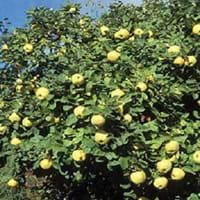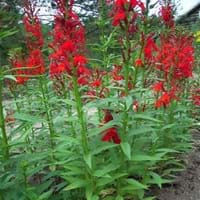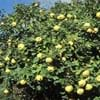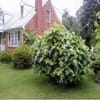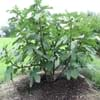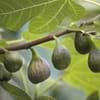Life Span
Annual and Perennial
Perennial
Origin
Central Asia, Western Asia
United States, Southeastern United States, South-Central United States, Texas, Mexico
Types
Not Available
Not Available
Habitat
Forests, gardens, Temperate Regions
Cultivated Beds
USDA Hardiness Zone
5-9
8-11
Sunset Zone
2a, 2b, 3a, 3b, 4, 5, 6, 7, 8, 9, 10, 11, 12, 13, 14, 15, 16, 17, 18, 19, 20, 21, 22, 23, 24
H1, 8, 9, 12, 13, 14, 15, 16, 17, 18, 19, 20, 21, 22, 23, 24
Habit
Oval or Rounded
Upright/Erect
Flower Color
White, Light Pink
Red, Magenta, Orange Red
Flower Color Modifier
Bicolor
Not Available
Fruit Color
Yellow, Yellow green
Brown, Red
Leaf Color in Spring
Green, Light Green
Green, Blue Green
Leaf Color in Summer
Green
Green, Blue Green
Leaf Color in Fall
Yellow
Green, Blue Green
Leaf Color in Winter
Light Green
Not Available
Leaf Shape
Oval
Arrowhead
Plant Season
Spring, Summer, Fall, Winter
Spring, Summer, Fall
Sunlight
Full Sun, Partial Sun
Full Sun, Partial Sun, Partial shade
Type of Soil
Clay, Loam
Loam, Sand
The pH of Soil
Acidic, Neutral
Acidic, Neutral, Alkaline
Soil Drainage
Well drained
Well drained
Bloom Time
Spring
Early Summer, Summer, Late Summer
Tolerances
Drought
Drought
Where to Plant?
Ground
Ground, Pot
How to Plant?
Seedlings, Stem Planting
Seedlings
Plant Maintenance
Medium
Medium
Watering Requirements
Needs watering once a week, Requires watering in the growing season
Average Water Needs
In Summer
Lots of watering
Lots of watering
In Spring
Moderate
Moderate
In Winter
Average Water
Average Water
Soil pH
Acidic, Neutral
Acidic, Neutral, Alkaline
Soil Type
Clay, Loam
Loam, Sand
Soil Drainage Capacity
Well drained
Well drained
Sun Exposure
Full Sun, Partial Sun
Full Sun, Partial Sun, Partial shade
Pruning
Cut or pinch the stems, Prune when plant is dormant, Remove deadheads
Remove damaged leaves, Remove dead branches, Remove dead leaves
Fertilizers
All-Purpose Liquid Fertilizer
Apply 10-10-10 amount
Pests and Diseases
Scale
No serious insect or disease problems
Plant Tolerance
Drought
Drought
Flower Petal Number
Single
Single
Foliage Texture
Medium
Medium
Foliage Sheen
Matte
Matte
Attracts
Birds
Hummingbirds
Allergy
no allergic reactions
Toxic
Aesthetic Uses
Not Used For Aesthetic Purpose
Borders
Beauty Benefits
Not Available
Not Available
Environmental Uses
Air purification
Air purification
Medicinal Uses
Pneumonia, Ulcers
Antiemetic, Diuretic, Purgative, Tonic
Part of Plant Used
Fruits
Flowers, Leaves
Other Uses
Culinary use, Used As Food
Used as a general tonic, Used as a rat poison, Used as a vegetable
Used As Indoor Plant
No
No
Used As Outdoor Plant
Yes
Yes
Garden Design
Edible, Fruit / Fruit Tree, Mixed Border
Feature Plant, Foundation, Mixed Border, Rock Garden, Wall, Wildflower
Botanical Name
CYDONIA oblonga
ERYTHRINA herbacea
Common Name
Quince
Red cardinal, Cardinal spear
In Hindi
श्रीफल
Red Cardinal
In German
Quitte
Red Cardinal
In French
Coing
Cardinal rouge
In Spanish
Membrillo
Cárdenas
In Greek
Κυδώνι
κόκκινο Καρδινάλιος
In Portuguese
Marmelo
Cardeal vermelho
In Polish
Pigwa
Red Cardinal
In Latin
Quince
Cardinalis Rubrum
Phylum
Not Available
Magnoliophyta
Class
Not Available
Magnoliopsida
Clade
Angiosperms, Eudicots, Rosids
Angiosperms, Eudicots, Rosids
Subfamily
Amygdaloideae
Faboideae
Number of Species
Not Available
Not Available
Importance of Quince and Red Cardinal
Want to have the most appropriate plant for your garden? You might want to know the importance of Quince and Red Cardinal. Basically, these two plants vary in many aspects. Compare Quince and Red Cardinal as they differ in many characteristics such as their life, care, benefits, facts, etc. Every gardener must at least have the slightest clue about the plants he wants to plant in his garden. Compare their benefits, which differ in many ways like facts and uses. The medicinal use of Quince is Pneumonia and Ulcers whereas of Red Cardinal is Antiemetic, Diuretic, Purgative and Tonic. Quince has beauty benefits as follows: Not Available while Red Cardinal has beauty benefits as follows: Not Available.
Compare Facts of Quince vs Red Cardinal
How to choose the best garden plant for your garden depending upon its facts? Here garden plant comparison will help you to solve this query. Compare the facts of Quince vs Red Cardinal and know which one to choose. As garden plants have benefits and other uses, allergy is also a major drawback of plants for some people. Allergic reactions of Quince are no allergic reactions whereas of Red Cardinal have Toxic respectively. Having a fruit bearing plant in your garden can be a plus point of your garden. Quince has showy fruits and Red Cardinal has showy fruits. Also Quince is not flowering and Red Cardinal is not flowering . You can compare Quince and Red Cardinal facts and facts of other plants too.
